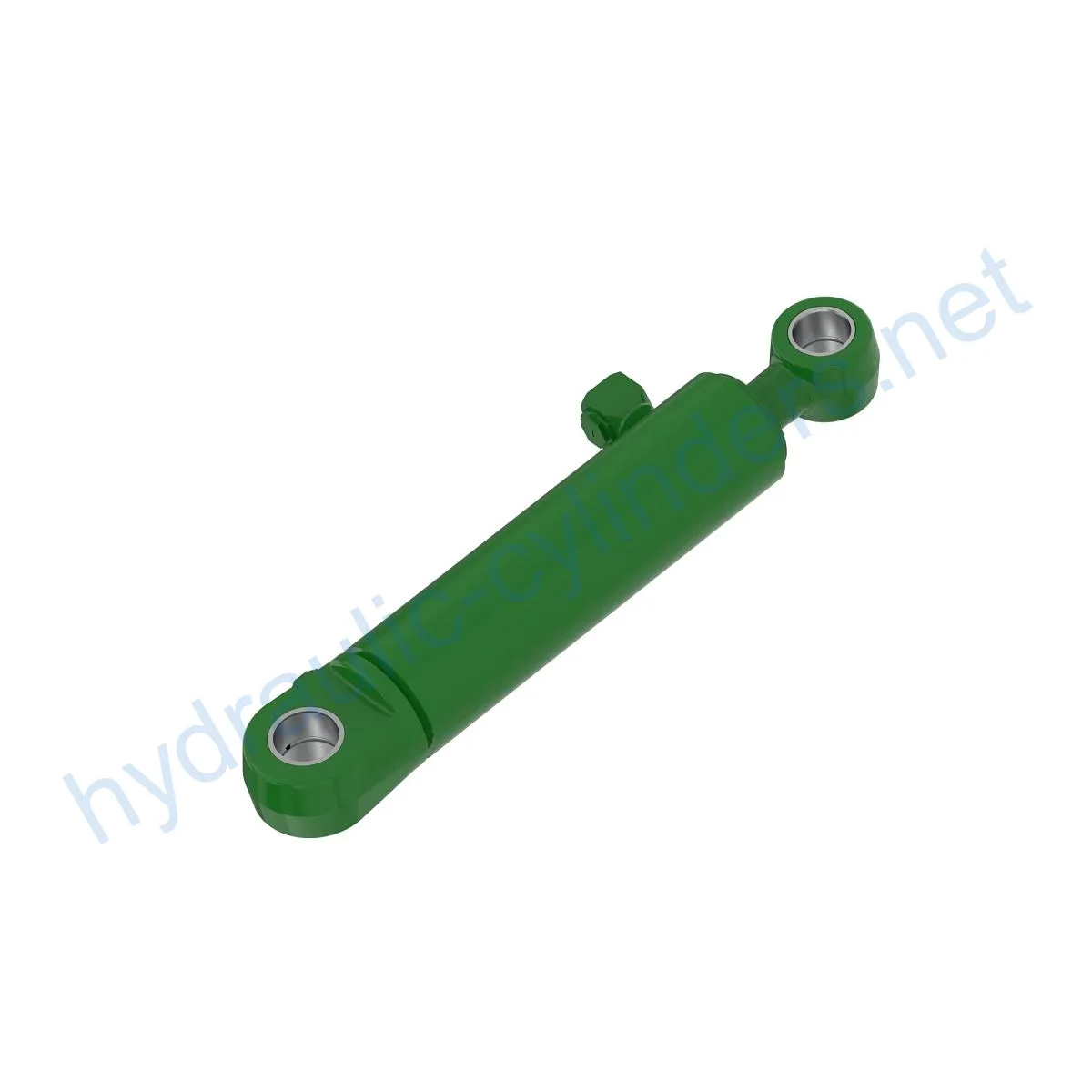Replacement Of AH211053 Hydraulic Cylinder
Som en af producenterne, leverandørerne og eksportørerne af mekaniske produkter tilbyder vi hydrauliske cylindre og mange andre produkter.
Kontakt os for yderligere oplysninger.
Mail:sales@hydraulic-cylinders.net
Producent, leverandør og eksportør af hydrauliske cylindre.
Replacement Of AH211053 Hydraulic Cylinder
Product Introduction
The Replacement Of AH211053 Hydraulic Cylinder is a crucial component in various industrial applications. This hydraulic cylinder is designed to provide reliable and efficient performance. It plays a vital role in the operation of machinery and equipment.
Specifications and Models
Specifications:
- Weight: 52 lb
- Height: 4.5 in
- Width: 6 in
- Length: 25.5 in
Models: [Insert models here]
Product Features
- Improved Equipment Performance: Replacing damaged or worn hydraulic cylinders restores the normal operational capabilities of equipment, ensuring optimal performance in various applications.
- Enhanced Safety: Regular replacement of hydraulic cylinders reduces safety hazards caused by cylinder failures, ensuring the safety of operators and equipment.
- Overload Protection: New cylinder designs often incorporate better overload protection mechanisms, enhancing safety during operations.
- Quick Installation: Modern hydraulic cylinders are designed for easy installation and replacement, reducing downtime.
- Standardized Components: Many hydraulic cylinders are standardized products, making it easier to obtain replacement parts in the market.
Applications
- Excavators: Hydraulic cylinders on the boom or bucket of excavators may get damaged due to prolonged use or overload, requiring replacement to restore normal operation.
- Cranes: Hydraulic cylinders on crane booms can wear out during frequent lifting and lowering processes, necessitating regular replacement for safety purposes.
- Tractors: Front-end loader hydraulic cylinders on tractors can develop leaks or performance issues due to continuous lifting and tilting operations, requiring replacement.
- Harvesters: Hydraulic cylinders in harvesting equipment endure high pressure during operation and can fatigue over time, requiring timely replacement to maintain work efficiency.
- Automated Production Lines: Hydraulic cylinders are used to control robotic arms and other automated equipment. Cylinder failures can lead to reduced production efficiency, necessitating immediate replacement.
- Die Casting Machines: Hydraulic cylinders in die casting machines may experience performance degradation under high pressure and temperature. Regular replacement ensures product quality.
- Mining Equipment: Hydraulic cylinders are used for lifting and moving heavy loads in mining equipment. Due to harsh working conditions, regular inspection and replacement are necessary to avoid equipment failures.
- Bulldozers: Worn hydraulic cylinders on bulldozer blades can result in decreased pushing capacity, requiring timely replacement to maintain operational efficiency.
Maintenance Tasks
Regular maintenance tasks for hydraulic cylinders include:
- Periodic inspections
- Proper lubrication
- Seal replacement
- Calibration checks
It is crucial to install, lubricate, and adjust the cylinders correctly. Providing proper guidance for aligning the cylinders during installation and recommending the use of appropriate mounting brackets for securing the cylinders are important. Recommended procedures for inspection, repair, and replacement should be followed, and replacement parts and rebuilding services should be provided to extend the lifespan of the cylinders.
Safety Considerations and Environmental Factors
When using hydraulic cylinders, safety measures are of utmost importance. Proper handling and maintenance of cylinders can prevent accidents and ensure operational safety. It is essential to consider environmental factors and follow safety protocols to minimize risks.
Troubleshooting and Common Issues
Common issues and troubleshooting for hydraulic cylinders include:
- Leakage: Check for damaged seals or connections and replace them if necessary.
- Slow or Inconsistent Operation: Inspect hydraulic fluid levels, check for blockages or air in the system, and ensure proper lubrication.
- Noise or Vibration: Check for loose or worn components, and perform necessary adjustments or replacements.
- Overheating: Inspect the cooling system, check for clogged filters, and ensure proper fluid circulation.
- Uneven Cylinder Movement: Check for misalignment or bending of components and correct them accordingly.
Providing tips and solutions for troubleshooting and problem-solving helps readers effectively diagnose and resolve issues. Additionally, suggesting preventive measures can minimize potential problems.

Design Considerations and Selection Criteria
Design considerations for hydraulic cylinders include:
- Load-bearing capacity
- Sealing efficiency
- Durability
- Safety features
- Maintainability
Each aspect should be discussed in detail to ensure the selection of appropriate hydraulic cylinders for specific applications.
Sealing and Lubrication
Hydraulic cylinders utilize various sealing components such as piston seals and rod seals. These seals are made from wear-resistant materials like polyurethane and nitrile rubber. The cylinder body and threaded ends are finely processed to enhance wear resistance. Regular lubrication with suitable hydraulic oil is necessary to ensure proper functioning.
Regular Inspections and Preventive Maintenance
Regular inspections and preventive maintenance measures are crucial for hydraulic cylinders. Proper installation, lubrication, and adjustment should be emphasized. Providing guidance for aligning the cylinders during installation, recommending the use of appropriate mounting brackets, suggesting inspection, repair, and replacement procedures, and offering replacement parts and rebuilding services contribute to extending the lifespan of the cylinders.
Installation Guide
Follow these steps for proper installation of the Replacement Of AH211053 Hydraulic Cylinder:
- Ensure the mounting surface is clean and free from debris.
- Align the cylinder with the equipment, making sure it is perpendicular and properly positioned.
- Secure the cylinder using appropriate mounting brackets and fasteners.
- Inspect all connections for leaks or damage.
- Test the cylinder for proper operation before putting it into full use.
Company Introduction
We are a leading manufacturer and wholesale distributor of replacement hydraulic cylinders. Our company offers a wide range of hydraulic cylinders, making us a trusted name in both domestic and international markets.
Key Highlights:
- Professionalism: We pride ourselves on our expertise in producing high-quality hydraulic cylinders.
- International Certifications: Our products meet international quality standards and certifications.
- Customization Services: We provide customized solutions to meet specific customer requirements.
- Advanced Production Equipment: Our state-of-the-art manufacturing facilities enable us to deliver superior products.
- After-Sales Service: We offer excellent after-sales support and assistance.

Take a Tour of Our VR Factory:
Take a tour of our VR factory with the following
Hydraulic Cylinder Application:


